Traditional markets, which have long been overshadowed by department stores, superstores, and online shopping malls, are making a comeback. But rather than merely regaining their past prosperity, they are now being perceived as exciting places to explore by younger people, leading to a redefining of the markets’ identities.
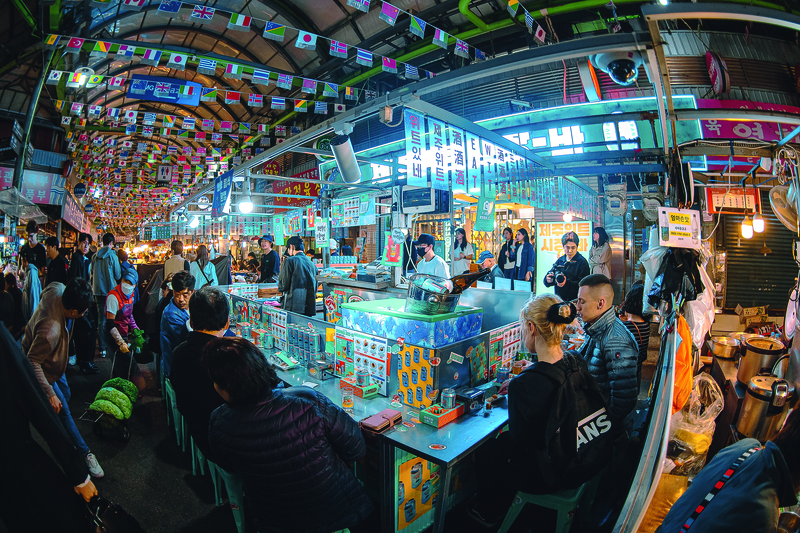
Visitors enjoy a happy moment drinking Jeju Beer at a pop-up store at Seoul’s Gwangjang Market. A total of 50,000 visitors flocked to the market over a three-week period, creating a bustling atmosphere.
© Jeju Beer
Elderly women crouching in front of stalls selling vegetables that they have grown and harvested; homemakers walking briskly to shop in the most economical way for whatever is necessary for the evening meal; and middle-aged office workers shaking off the day’s stress by having a drink along with several affordable side dishes: These are the images that immediately spring to mind for Koreans upon hearing the phrase “traditional market.”
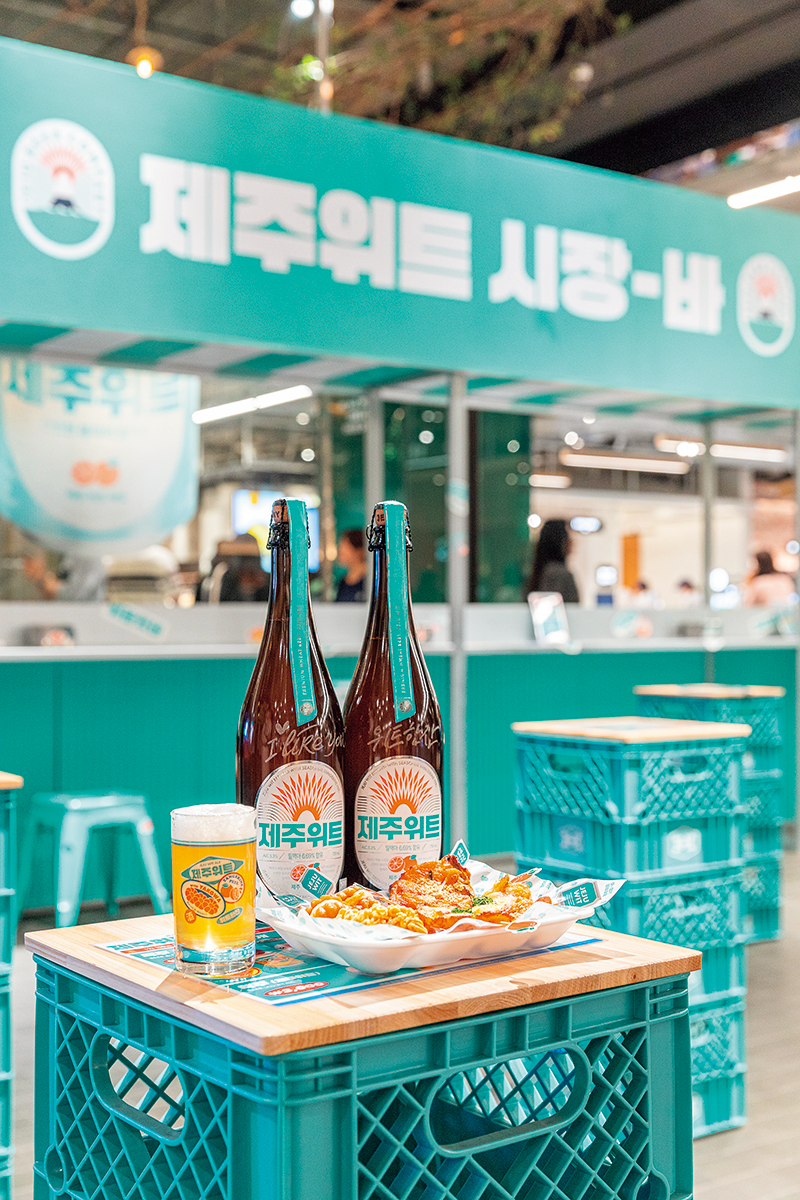
The skewered appetizers that Jeju Beer sold during the pop-up. Inspired by the market’s local delicacies, these creative dishes proved hugely popular.
© Jeju Beer
But changes are afoot. For instance, in May 2023, Jeju Beer opened a pop-up store at Gwangjang Market in Yeji-dong, Seoul. The brewery’s choice of this market was somewhat unexpected. Gwangjang Market had long been famous as the center of traditional Korean clothing, rather than as a trendy place or a useful spot for promotional activities. Lately, numerous local and international brands have been launching concept stores or organizing events at traditional markets. But why do they choose these outdated places, now so clearly overshadowed by superstores? It’s because these sites, which used to merely serve as convenient neighborhood markets for older shoppers, are emerging as playgrounds for the younger generation.
FLAVOR COUNTRY
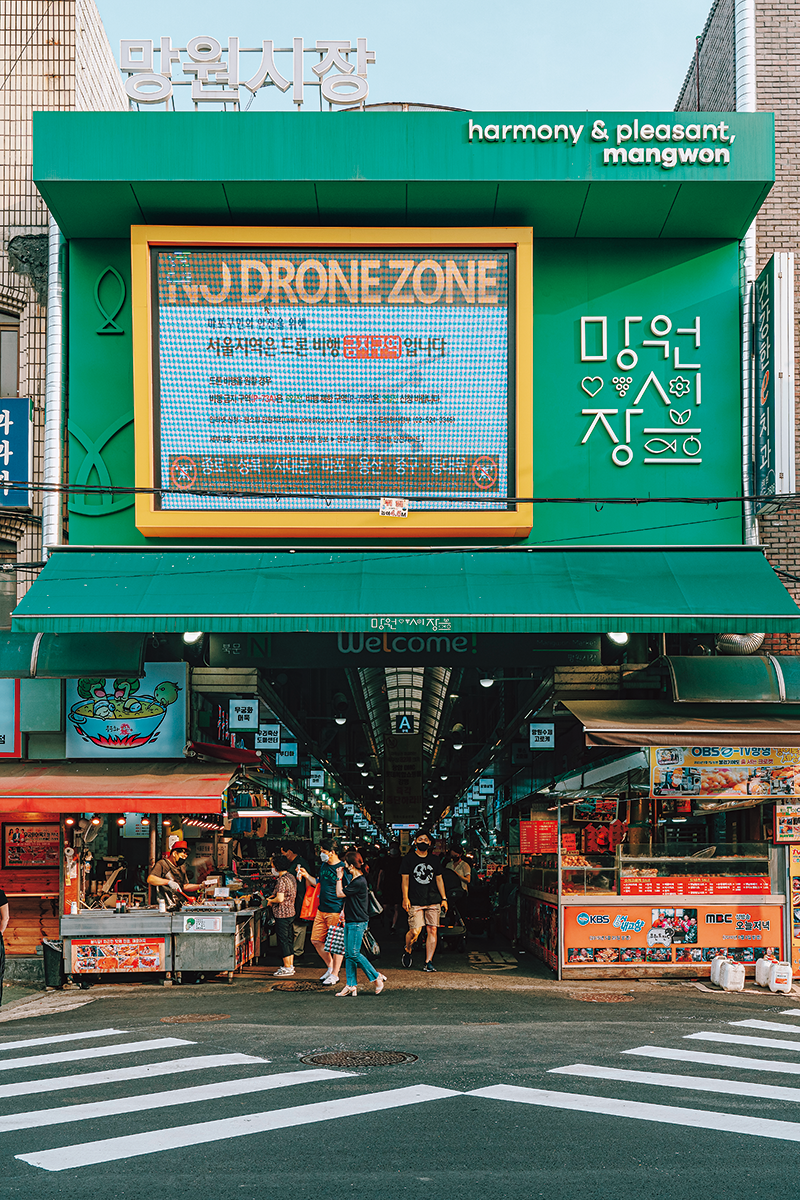
Mangwon Market is a traditional market that was established in the 1970s in Seoul’s neighborhood of the same name. As more people discovered the area, a tourism belt developed with nearby attractions such as the Han River Citizens’ Park, Oil Tank Culture Park (a multipurpose cultural space), and the streets around Hongik University.
© Seoul Tourism Organization
People in their 20s and 30s regard traditional markets as the optimal place to delight the palate. Gwangjang Market is particularly well known as a perfect place for daytime drinking. The market’s specialties, such as mung bean pancakes, rice rolls, glutinous rice doughnuts, and blood sausage, can of course be found all over Korea. However, the skilled chefs of the old market stalls and restaurants transform these somewhat ordinary dishes into delicious accompaniments for alcohol. Furthermore, there are so many restaurants specializing in sliced raw beef that an entire alley is exclusively dedicated to it. Even for foreign tourists, Gwangjang Market has become a must-visit destination.
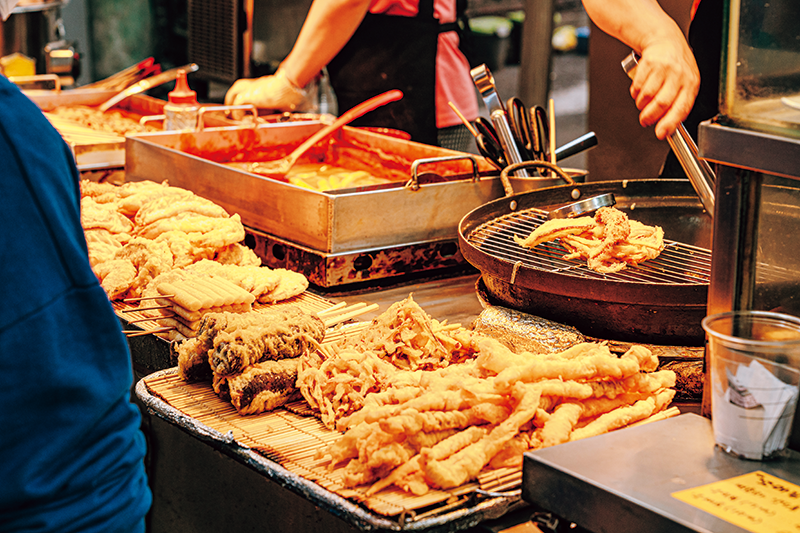
Mangwon Market is emerging as a gourmet destination thanks to the development of new dishes that cater to the younger generation, alongside the traditional foods commonly found in markets.
© Seoul Tourism Organization
Mangwon Market, situated near Mangwon Station on Seoul Subway Line 6, is another hot spot known for its diverse culinary offerings and bustling atmosphere. Similar to the nearby neighborhood of Seogyo-dong, not far from Hongik University, this market features a wide array of trendy food items alongside common street food like spicy rice cakes and dumplings. A recent addition to the culinary scene are fried chili peppers. While they can be found at many markets and street food stalls, the portions sold at Mangwon Market are notable for their generous size. Other eye-catching snacks include sweet pancakes sprinkled with chicken seasoning, and ice cream-filled marshmallow pieces with a blow-torched surface, all designed to cater to the taste buds of the younger generation.
A SPACE FOR NEW EXPERIENCES
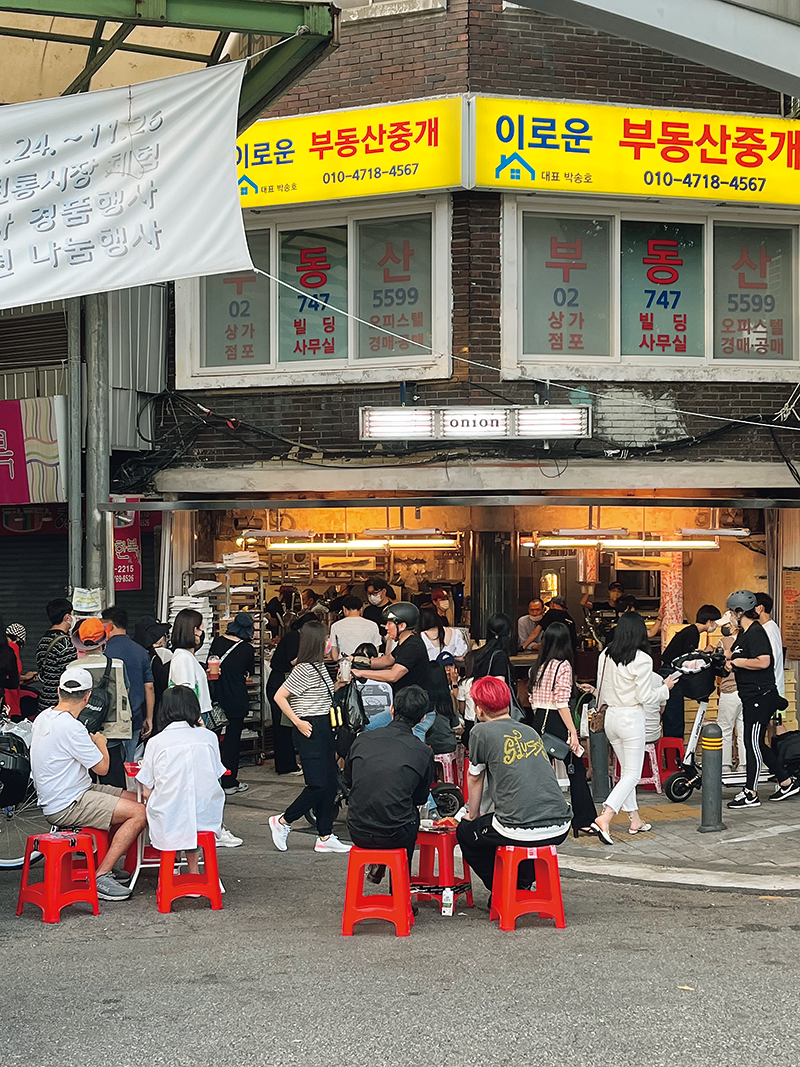
Located near the entrance of Gwangjang Market, Café Onion has been a hot spot for the younger generation since it opened in September 2022. Designed by Fabrikr, the interior décor centers on nostalgia and incorporates everyday items used by market vendors, such as box tape and plastic chairs.
© Onion
Markets also offer unique experiences for the youth. The partly open-air Café Onion, located at the entrance of Gwangjang Market, boasts a distinctive look, with menus hand-written on large panels torn from cardboard boxes and plastic chairs tightly wrapped with wide branded adhesive tape. The interior space, renovated from a 60-year-old jewelry shop, has retained its exposed concrete walls, and vintage items have been tastefully arranged, thus blending seamlessly with the surrounding market ambiance. Here, customers drink coffee with a sentimentality similar to the feeling of eating spicy rice cakes at a street stall.
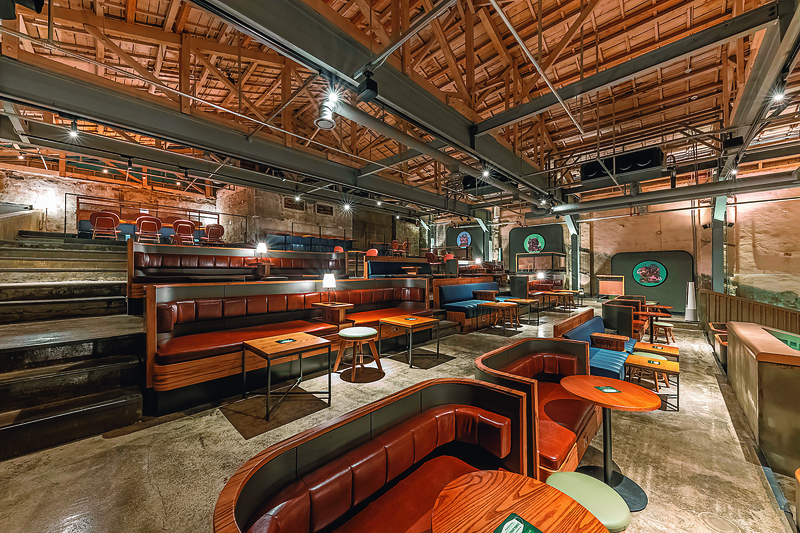
In the past, Gyeongdong Market, which specializes in traditional Korean medicine, was predominantly frequented by middle-aged and elderly customers. However, since the opening of Starbucks’ Kyungdong 1960 café-cum-community space in December 2022, the number of visitors in their 20s and 30s has increased significantly.
© Starbucks Coffee Korea Company
A retro vibe can also be felt at the Kyungdong 1960 community store at Gyeongdong Market in Jegi-dong, Seoul. The Starbucks-run café-cum-community space is in a building that previously housed the Kyungdong Theater, a cinema built in the 1960s, but was later used as storage by local merchants after the theater closed in 1994. In keeping with the market’s yesteryear charm, the store is styled with retro nostalgia. Dominated by shops selling herbal medicine and ginseng, the market has emerged as a must-visit hot spot for people in their 20s and 30s. The operator says that it attracts over 1,000 customers every day, and more than 2,000 on Saturdays and Sundays.
To get there, visitors must pass through the GoldStar Electronics Refresh Center, which occupies the first and second floors of the building. The space was transformed into a retro-themed brand experience area by LG Electronics, the successor of GoldStar, and launched at the end of 2022. It displays vintage home appliances such as black-and-white TV sets, refrigerators, and washing machines. One of the walls is dedicated to an LG LED signage display, showing old images of the market as well as seasonally themed videos. This s a nostalgic atmosphere for middle-aged visitors and taps into the newtro (“new” plus “retro”) trend that is popular with the younger generation.
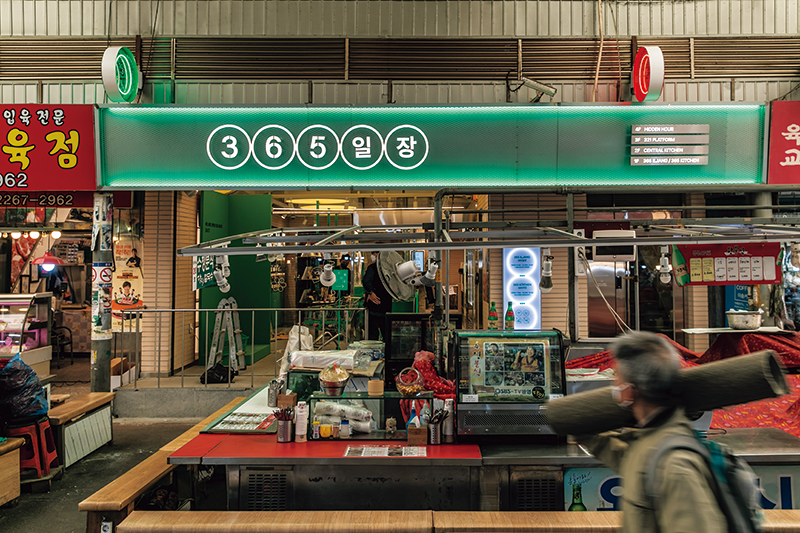
The front view of 365-day Market, a grocery and miscellaneous goods store that opened at Gwangjang Market in October 2021. Popular market dishes are reinterpreted as meal kits and displayed alongside local brand products. 365-day Market has become a popular spot because it offers new and distinct experiences not easily found at other traditional markets.
© LMNT & Allaround
The above-mentioned Gwangjang Market also has a concept store which is generating word-of-mouth buzz. Launched in October 2021, 365-day Market is a foodstuff outlet that targets young consumers by offering a wide variety of products rarely found in similar markets. The experiences that visitors enjoy here are challenging conventional notions about traditional markets.
NEW OPPORTUNITIES
In part due to the COVID-19 pandemic, Korea has entered an era where almost anything can be bought online. Hence, some people have predicted that offline businesses will soon disappear. However, the reality is in fact the opposite now that the pandemic has been downgraded to an endemic. Traditional markets, for example, have become particularly strong magnets for youth thanks to their on-site experiences. For the younger generation, markets are no longer mere shopping destinations but now serve as playgrounds where tourism, culture, and entertainment converge.
The French psychoanalyst Jacques Lacan once noted that the key to breaking the monotony of everyday life is in non-everydayness. Traditional markets, which have been overshadowed by superstores and online shopping malls, now have the chance to develop new types of businesses if they continue to provide consumers with novel and innovative forms of fun. In order to seize this opportunity, each market has to identify its own character and content. Traditional markets, which have long been perceived as in decline, now find themselves on the threshold of new opportunities.